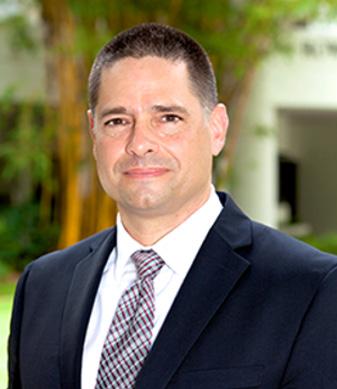
3 minute read
» Strategies to Help the Hard of Hearing During COVID-19 Precautions
Medicine, and Lisa R. Metsch, Ph.D., professor at Columbia University’s Mailman School of Public Health. Hansel E. Tookes, M.D., M.P.H., assistant professor at the Miller School of Medicine’s and founder of the IDEA Exchange, served as senior author.
Tyler Bartholomew, Ph.D.
Advertisement

Hansel E. Tookes, M.D., M.P.H.

Written by Amanda Torres Published on May 1, 2020 Category: Chair, Faculty, Published Commentary
Amid the physical distancing restrictions for the COVID-19 outbreak, audiology and public health experts at the University of Miami Miller School of Medicine and the Hispanic Hearing Healthcare Access Coalition strongly recommend that communities take special measures to continue communicating and stay connected with people who are hard of hearing.
In an article published in The Conversation, co-authored by David J. Lee, Ph.D., professor of public health sciences at the Miller School, and colleagues from the University of Arizona, noted that wearing masks and physical distancing — two recommendations from the Centers for Disease Control and Prevention — can pose potential communication challenges for people with hearing loss.
“Our hope is that this information is helpful to health care providers, nurses, doctors and patients alike, to make communication easier under the challenging circumstances presented by the COVID-19 pandemic,” Dr. Lee said.
In the United States, there are approximately 60 million Americans who are living with hearing loss in one or both ears.
“Human brains are designed to use visual cues, like watching one another’s lips move, to help understand speech,” noted lead author Nicole Marrone, Ph.D., associate professor in speech, language, and hearing sciences at the University of Arizona. “Wearing a mask eliminates this vital visual information. Acoustically, face masks muffle speech. Donning a mask over a hearing aid or cochlear implant can be problematic or uncomfortable — causing some to remove their hearing devices.”
Dr. Lee, Dr. Marrone, patients and other experts from the Coalition suggested 10 simple but effective strategies that can boost communication:
» Face each other at a safe distance of at least six feet.

» Maintain eye contact to enhance social connection and keep attention focused on communication. » Speak slowly and with care to make it easier for listeners. Speakers often naturally try to compensate by projecting, but a more effective approach is to speak clearly with greater enunciation. » Ask others to repeat back what you said to confirm the message is being understood and not just heard. » Real-time captioning can improve communication access in telehealth, virtual meetings and online education. » Ask the deaf or hard-of-hearing person, “How can I best communicate with you?” Try re-phrasing the information if the listener is having difficulty understanding your message. Write your message down or try speech-to-text if someone is having trouble hearing you. » Select quiet spaces with little background noise for improved listening. » If available, use or make clear masks or face shields, which will help by restoring visual information in speech. » Seek out and offer multiple forms of communication, such as written text or real-time captioning and assistive technology. » For those who use American Sign
Language, qualified interpreters can be accessed through video relay. People with hearing loss or combined hearing and vision loss may want to bring a printed communication card along with them to the hospital.
More resources and guidance for patients and providers can be found from the Hearing Loss Association of America and the National Association of the Deaf and other associations.
Brendaly Rodríguez, M.A., manager for community stakeholder engagement in the Clinical and Translational Science Institute (CTSI) at the Miller School and patient engagement lead for the Coalition, has translated these strategies into Spanish and shared them via radio on Para Mayores, with the recording now available through the CTSI’s YouTube channel.
“Following these recommendations can empower people to communicate more effectively,” Dr. Marrone further noted. “While many things are out of control at this time, everyone can choose communication strategies that will help each other.”
David J. Lee, Ph.D.












